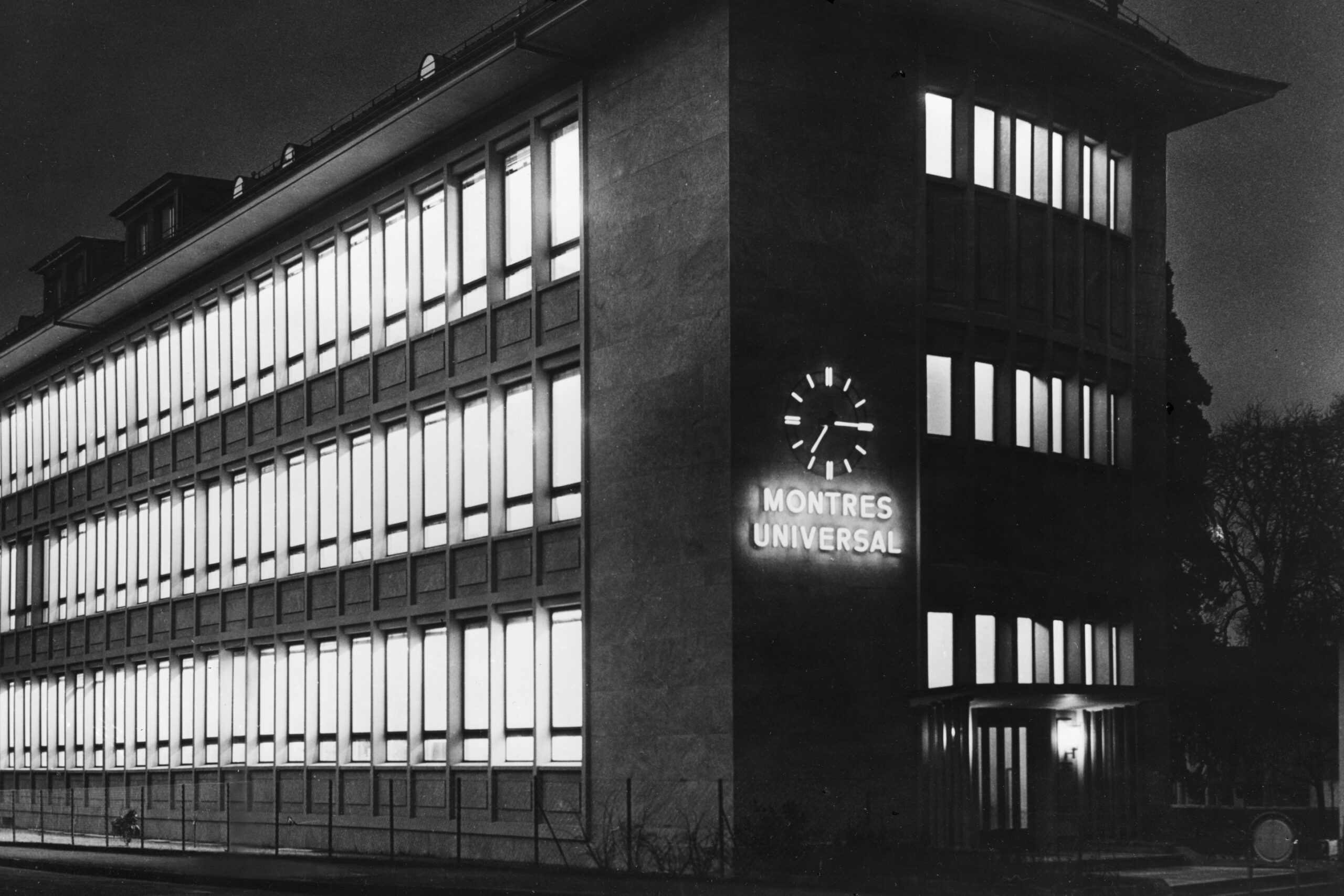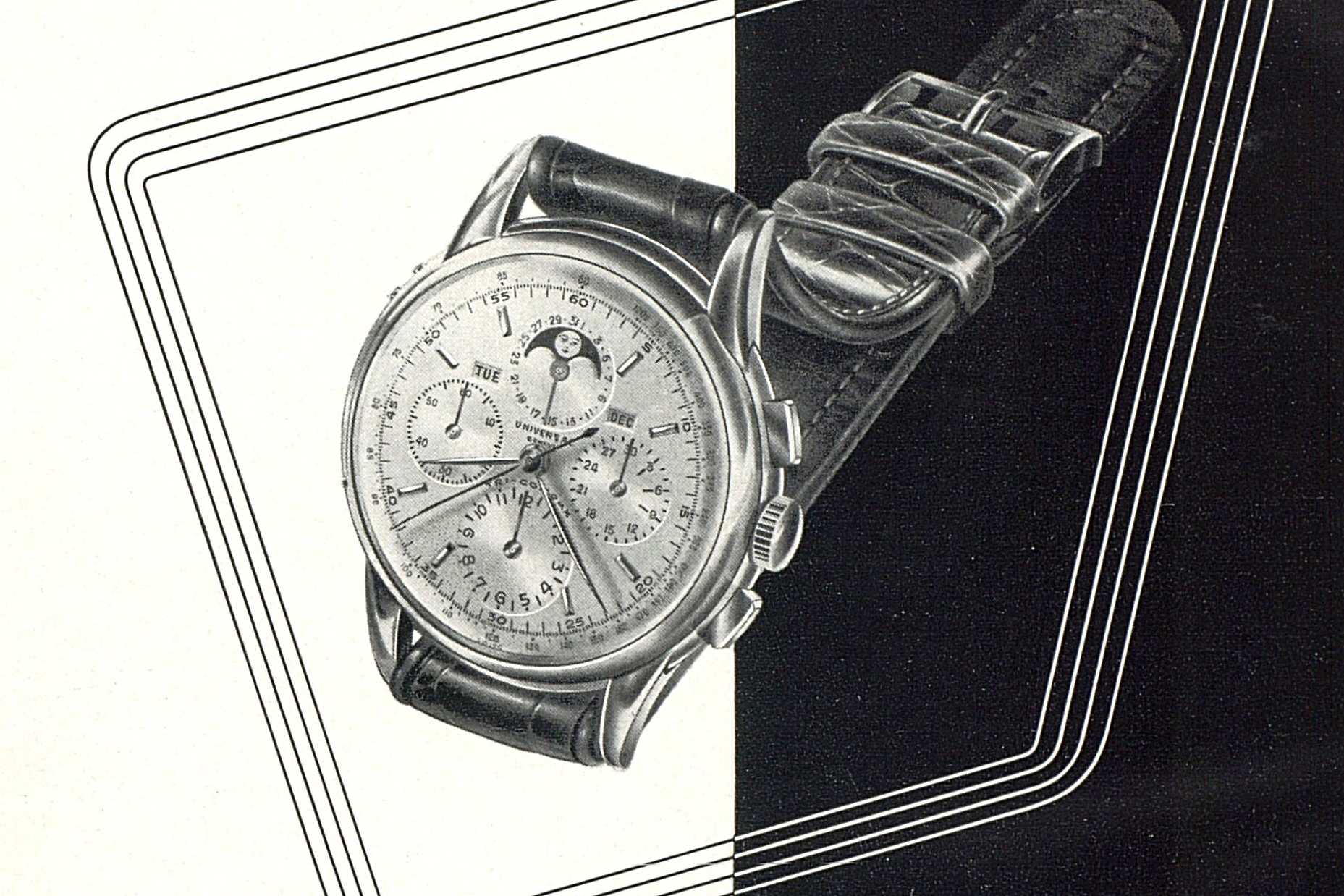It’s one of the most anticipated returns in all of watchmaking. The storied brand Universal Genève looks set for a worthy comeback, but you’ll have to wait for their first watches.
Polerouter. Nina Rindt. Variants of “Compax.” In the world of vintage watches these names have serious weight, as does the watchmaker behind them, Universal Genève. But the celebrated company has been all but lost to watchmaking for decades, until now.
It’s some of the biggest news watch fans could have hoped for: Universal Genève has been acquired by the same company (Partners Group) that controls Breitling. Indeed, many have hoped for such a comeback of the beloved brand and talked about it for a long time. And now, this storied brand is finally being resurrected. Here’s what it actually means for enthusiasts.
Why Universal Genève’s vintage watches are so celebrated
Just as in modern watches and many other pursuits, hype is a force in vintage watches. Certain models such as the Polerouter are particularly well known, but the brand Universal Genève itself is something like a darling among collectors. Why? And why is the brand’s resurrection such a big deal?
The hype doesn’t come from nowhere, of course. Universal Genève is known first for its high-quality chronographs and later for its micro-rotor movements. The Compax series of watches began in the 1930s and models from the ‘40s such as the Tri-Compax were recognized in their time but have become legendary in retrospect.
Such watches have been valued by collectors deep in the game, but a simpler model has in recent years catapulted the brand into much wider recognition. That would be the Polerouter. It was an early design by Gerald Genta who would later have massive influence on the industry by creating an entire category now called “luxury sport watches” (among other appellations) with the Audemars Piguet Royal Oak and Patek Philippe Nautilus.
The Polerouter’s story has been told many times, but it incorporated a thin micro-rotor movement and was created to commemorate Scandanavian Airlines Systems polar flights from New York/Los Angeles directly to Europe in 1954. The celebrity (Genta) association along with its backstory and technical interest (in-house micro-rotor movement) and relatively approachable price made it exciting to vintage collectors. Ironically, it’s no longer as much of a value play as it once was, but its pumped-up status has endured.
There are yet more reasons collectors love Universal Genève. Many will point out that by the 1940s it was distributed by the same company to sell Patek Philippe in the United States, and a little Patek stardust never hurt anyone. To many, Universal Genève in its heyday was a peer of Rolex and Patek Philippe and today is viewed as a prime representative of the so-called “golden age” of 20th century watchmaking.
It’s tough to definitively say why a watch brand or model is popular, but the above factors certainly play a role.
So what happened to Universal Genève?
Simply put, Universal Genève was a casualty of the so-called “Quartz Crisis” when battery-powered technology uprooted the traditional (mechanical) watchmaking industry and spelled the demise of many a brand that couldn’t adapt. The full story, however, is less simple, as Universal Genève never technically or completely died. Read more about Universal Genève’s history here.
Since around the 1970s, however, it’s existed largely in name only and little like Universal Genève as it’s fondly remembered. It tried to survive on quartz technology for a time, and the rights to its name and intellectual property changed hands more than once. There have been attempts to relaunch the brand and many more to purchase the rights to it.
Just as collectors have their “grail watches,” Universal Genève itself has long been something like a “grail” for entrepreneurs and corporations who would revive it. Until Breitling’s acquisition for an undisclosed sum, it was owned by Hong Kong-based Stelux Group since 1989. It’s a challenge for Breitling, but there’s every reason to believe that it’s well positioned to give Universal Genève worthy return.
What Breitling’s current approach tells us about Universal Genève’s future direction
What we know about Breitling can be extrapolated to some degree to look ahead at Universal Genève’s revival. Breitling CEO Georges Kernes explains that “a dedicated team will be brought on board to allow Breitling and Universal Genève to operate as separate maisons.” So while it’s not clear whether or not Kernes himself will be leading the company, we feel a similar approach to what he’s done with Breitling in recent years can be expected.

Specifically, he’s pushed out in-house movements and followed industry trends with smaller diameters, vintage reissues and generally retro inspiration. It’s been successful. Referring to “the profound heritage we are set to uphold,” updated models of Universal Genève’s most popular models seem likely, but there’s also a lot for a contemporary brand to play with. Breitling and its parent company might invest in in-house movements, perhaps with shared technology and/or production.
When brands exist within a corporate group, though, there’s the matter of positioning. We would expect for Universal Geneve to be positioned as a higher-end counterpart to Breitling’s luxury tool watches.
There will be new Universal Genève watches, eventually
All this is exciting, but watch fans will need to tamper their enthusiasm as we won’t be seeing new Universal Genève watches quite yet. So far, the acquisition has only been announced, and there’s no timeline or much detail on how the brand’s future will unfold. In its press release, Breitling describes the future of Universal Genève as “rebuilding” and it says it is “not a quick endeavor—it is a meticulous labor of love that we anticipate will unfold over the coming years.” Bringing such a storied brand back in the way that enthusiasts crave is a challenge, indeed, but the potential seems genuinely huge.














